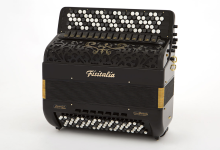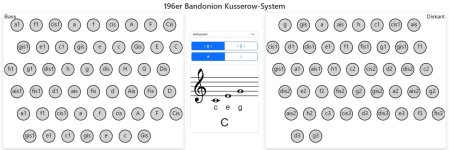That would be really nice @losthobos!
Yet there is something quite special about C system on RH & LH. It's even evident when you just perform the simplest C major scale on the right hand... and the left hand is almost magnetically compelled to mirror the motion on the bass buttons. It is perhaps the most elegant of accordion designs IMHO...
Yet there is something quite special about C system on RH & LH. It's even evident when you just perform the simplest C major scale on the right hand... and the left hand is almost magnetically compelled to mirror the motion on the bass buttons. It is perhaps the most elegant of accordion designs IMHO...


